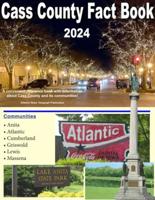The list of threatened and endangered species, both plant and animal, in the state of Iowa is quite extensive. The opportunity for restoration requires quick action. As more people live in urban areas and those areas continue to expand, it means the preservation and enhancement of biodiversity management is important. Let us start with breaking down the words “biodiversity management.” Biodiversity transcends all levels of life forms. It goes from genes to communities and all spatial and temporal scales. The impact a city can have on adjacent ecosystems can be significant, but we can learn a lot from biodiversity. How do we impact the biodiversity around us? Well, we can focus on three things:
1. How does our city impact adjacent ecosystems?
2. How can we maximize the diversity of plants and animals in our cities?
3. How can we manage the species within our ecosystem?
These items can begin to be addressed by increasing the amount of “No Mow” areas or increasing the amount of native plantings across all levels. Federal, state, local, and homeowners all play an important role in biodiversity management. Increasing plant diversity plays a crucial role in increasing animal diversity. Native plants, with their deeper root systems, increase the overall soil health, control runoff more efficiently, reduce water pollution, and help with erosion control. The EPA lists one of the leading pollutants in rivers and streams in the United States and the world is soil from runoff. Even by just letting certain grass corridor areas grow, this can increase the number of species taking refuge in these areas. Many birds are looking for food. Long grass attracts all types of insects. Insects are more than just creepy crawly bugs, but can also be species on the decline such as butterflies or bumble bees. Riparian areas, buffer strips along rivers and streams, provide extremely important corridors for wildlife amongst urban areas. By preserving these natural areas with the right vegetation, we can enhance the biodiversity on all levels.
When managing local areas such, as parks or residential properties, many landscape factors should be taken into consideration. Factors such as composition or arrangements of habitat types around a local area have significant impact on plant and animal species. Migrating species, such as birds or butterflies, rely on proper vegetation and wildlife refuge areas to complete their journeys. Many times these trips are vital in the reproduction of their species or the spreading of seeds for plant species. All these delicate interactions are important factors in biodiversity management techniques.
Biodiversity management also means areas need to be addressed as a whole. By only focusing on one type of environment, this can lead to an imbalance in a delicate ecosystem. Land management for grasses, flowers, trees, and wetlands all help do their part to attract and save species. Aquatic organisms require the same amount of attention, if not more. Swamp areas, or wetlands, are the vital organs to the aquatic world. It recharges the groundwater, filters pollution, and can help protect from flooding.
As you drive around, you will see certain methods being used to set up wildlife corridors to optimize and enhance our fingerprints on biodiversity management. The city of Atlantic is blessed with being recognized as a Tree City USA community. Now the Atlantic Parks and Rec Department is looking to increase the environmental impacts. Increasing areas of “No Mow” or native plantings in parks like Schildberg Recreation Area, Mollett, East Ridge, and areas around Pellett, help reach animals throughout the city. These areas of longer grass take time. As Ralph Emerson states, “adopt the speed of nature. Her secret is patience.” Many times the transformation can take 3-4 years. The plants take longer to produce as much of the first year the plants grow down to establish the extensive root system. Along creeks like Bull Creek and in Sunnyside Park, riparian buffers offer more than just erosion control. It offers filtration from runoff, wildlife refuge for many species, and an environment to expand the plant species diversity. Nishna Park, thanks to the IDALS Water Quality Grant, has created a Wetland Environment for water quality and water control and a safe haven for many plants and animals.
For areas where long grasses or creating a wetland may not be feasible, the implementation of nesting boxes can be seen. There are boxes for native animals such as the Bluebird and Owl, bat houses, or specific bird houses for birds such as Purple Martins. Each one creates a home for different species which offer assistance to humans. Both the Purple Martin and bats are known to eat many mosquitoes. Without using sprays, which can be harmful to bees and the environment, this can be created to benefit all animals including humans. Biodiversity Management transcends all levels and can be used to allow humans and nature to co-exist. These animal species’ communities are impacted by the amount of natural vegetation contained within and around the city.
Homeowners can get in on this self-fulfilling endeavor as well. By varying bird feeders, adding bird houses, planting native flowers, or implementing rain gardens are just a few ways we as humans can begin to repair the fractured relationship between humans and nature. An ancient proverb states “We do not inherit the Earth from our ancestors; we borrow it from our children.” We must continue to find ways to pass down our planet and its ecosystem uninhibited and in better shape than when we inherited it.
By implementing small biodiversity management tactics, the City of Atlantic has an opportunity to apply and be recognized as a “Bird Friendly Iowa” city. Recovering wildlife is a win-win for everybody. It has the ability to strengthen our economy, improve public health and happiness, and create ecosystems which are more resilient. We owe it to future generations to not allow any species to vanish from this Earth, many of which could have a gravitational impact on the hierarchy of our biodiversity.













